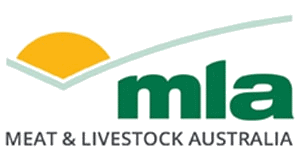P.PSH.1400 - mRNA technology to rapidly produce vaccines for emergency diseases of animals especially lumpy skin disease
Australia faces increasing biosecurity threats to its animal populations which have far reaching economic, social, and animal welfare impacts.
| Project start date: | 30 May 2022 |
| Project end date: | 30 December 2024 |
| Publication date: | 02 October 2024 |
| Project status: | Completed |
| Livestock species: | Grain-fed Cattle, Grass-fed Cattle |
| Relevant regions: | National |
Summary
Lumpy skin disease (LSD) is an infectious viral disease of cattle, spread by biting insects, that causes morbidity and significant production loss. The disease originated in Africa and has now spread through Asia to Indonesia. Modelling has suggested that there would be a minimum A$3.2B impact in terms of annual gross value of production should the disease enter Australia .
NSW DPI (Elizabeth Macarthur Agricultural Institute – EMAI) will partner with Tiba Biotech in the USA to develop a mRNA vaccine construct pipeline that will enable capacity for rapid mass production of a vaccine for LSD in the event of an outbreak. The project will deliver an mRNA vaccine construct for LSD that can be rapidly upscaled for mass production, with associated efficacy testing and a mapped pathway to Australian Pesticide and Veterinary Medicine Authority registration.
Objectives
In this project the potential for RNA vaccines to improve preparedness for emergency animal diseases was evaluated. Specifically, the aim was to determine the feasibility of developing an mRNA vaccine that could be used in the event of a lumpy skin disease virus (LSDV) outbreak in Australian cattle. The advantages of mRNA vaccines include the potential for rapid local production, low biosecurity risks, and options to distinguish vaccinated from infected animals (DIVA). A collaboration between NSW DPIRD at Elizabeth Macarthur Agriculture Institute (EMAI), Tiba Biotech (Boston, US) and the Canadian Food and Inspection Agency (CFIA, Winnipeg) provided licenced access to novel RNA vaccine design and delivery technology and background knowledge about the priority vaccine targets in the LSDV genome. The University of New South Wales (UNSW) RNA Institute were engaged to enhance vaccine production methods and establish a local production capacity.
Key findings
An mRNA vaccine for Border disease virus (BDV) of sheep was developed and evaluated as a proof-of-principle for the vaccine development pathway to overcome the constraints of working with exotic viruses. The preferred vaccine design was initially determined using in vitro methods and mouse studies to identify the RNA sequence encoding the virus surface glycoprotein (BDV-E2) that provided the optimal neutralising antibody response. The preferred dose for the vaccine and chemistry for the nanoparticle delivery formulation was determined in sheep. The immunogenicity of the vaccine varied depending on the delivery chemistry. A rabbit model for vaccine evaluation was developed and was shown to predict the immune response in the target host to different vaccine formulations. A challenge study using BDV in sheep demonstrated the efficacy of a candidate vaccine that induced a protective neutralising antibody titre to protect against infection. The preferred BDV vaccine was successfully produced in Australia (UNSW RNAi) and was shown to have comparable or superior immunogenicity compared to the imported product.
The vaccine development pathway was subsequently applied to LSDV with multiple sequences for vaccine constructs optimised using in vitro expression and mouse immunogenicity studies. Formulation of the vaccine with different delivery chemistry and combinations of multiple antigen targets was tested in rabbits (EMAI) and sheep (CFIA). A study in cattle at EMAI demonstrated consistent immune responses to some vaccines with single or multiple antigen targets. Further studies are necessary to identify the optimal combination of vaccine targets and dose to maximise immune responses and ultimately provide protection against virus challenge.
Benefits to industry
This project has been instrumental in testing the regulatory pathway for RNA vaccines in livestock. The project team has engaged extensively with the Department of Agriculture Fisheries and Forestry (DAFF), the Australian Pesticides and Veterinary Medicines Authority (APVMA) and Office of the Gene Technology Regulator (OGTR). Policy and procedures to evaluate the safety and efficacy of RNA vaccines for livestock have been shaped by this project.
MLA action
This project summary is being shared on the MLA R&D reports website. Regular project updates for future work (P.PSH.1444) are shared by the project and program manager from the Animal Wellbeing Program.
Future research
This research will continue under project P.PSH.1444 to optimize the candidate LSDV vaccine in cattle and assess efficacy of the preferred formulation with a virus challenge trial offshore. This vaccine technology will be developed in a manner that will support a platform registration approach that can subsequently be applied to the production of additional livestock vaccines including pestiviruses and foot and mouth disease virus.
More information
| Project manager: | Michael Laurence |
| Contact email: | reports@mla.com.au |
| Primary researcher: | NSW Department of Primary Industry |


